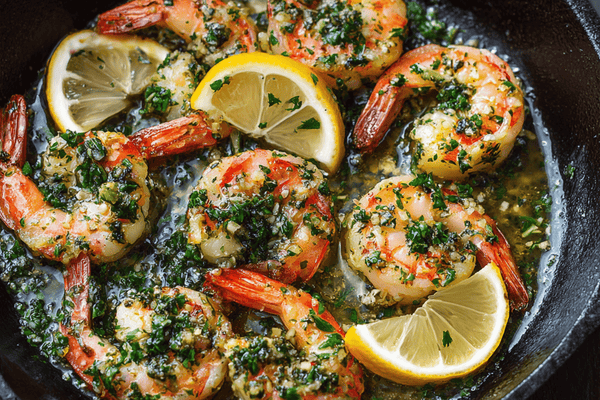
When sharpening a traditional Japanese knife (or any knife for that matter) certain techniques, methods, and tools are needed to do an optimal job and create the desired sharp knife edge.
When it comes to sharpening a knife in the 21st century, there is a wide range of new methods that look to utilise modern technology however, sometimes the best approach that you can take is a traditional method and this then leads to the debate of which tool you should use to sharpen knives, a whetstone or honing steel?
In order to maintain your kitchen knife and ensure it always holds a sharp edge, you will need to use a combination of both a whetstone and honing steel. Honing steel should be used after every use of a kitchen knife to realign curled edges and a whetstone should be used every few months (depending on how frequently you use your knife) to sharpen your knife and for a new edge.
The differences and uses of both a whetstone and honing steel are often confused, misinterpreted, or simply used incorrectly.
Knowing what the difference is between the two and when/how you should use each one will be the difference between your knife holding a sharp edge for a long period of time (often generations when it comes to traditional Japanese knives) or being frequently blunt and producing poor quality cuts.
Table of contents
Whetstone vs Honing Steel

Maintaining a sharp edge is something that is essential when using a kitchen knife and this is true whether you are a home cook or a professional chef. Most knives (ignoring the serrated bread knife) will look to the naked eye as though they have a very smooth and straight edge.
It could be easy to assume that the smoother the edge of your knife is, the sharper it will be, however, most knives when looked at from a microscopic level are actually made up of very small burrs.
These burrs (which resemble teeth) are what contribute to a blade having a sharp edge alongside some other factors like the angle the edge was ground to and what material was used for the blade.
Repeated use when cutting through food and chopping against a board will start to bend these burrs out of alignment and it's the curling of steel on the edge of a blade that results in a dull knife. With that said, below are the two most common tools used to sharpen your knife and realign the edge.
Note - as you read through each tool though, keep in mind how the knife becomes dull and what effect these tools have to prevent it.
What Is the Difference Between a Whetstone and Honing Steel?
A whetstone and honing steel are two of the most common sharpening tools for kitchen knives and in particular, Japanese knives. While these are both considered sharpening tools, this is actually a common misconception;While a whetstone is primarily used to sharpen and reform the edge of a knife, honing steel is not a sharpening tool and it’s actually used to realign curled edges, this is where the misconception often arises. Honing steel helps to maintain a sharp edge however it does not actually contribute to “sharpening” of the edge.
If you were to only use honing steel to sharpen your knife, the blade will gradually dull over time with repeated use until it gets to the point where it is almost unusable. This will, of course, be frustrating for any knife owner that can’t work out why the honing steel won’t sharpen their knives.
Likewise, if you were to only ever use a sharpening stone without regularly honing the knife, you’d find yourself having to sharpen the knife much more frequently and would reduce the lifespan of your knife as you’d be constantly removing layers of steel from the edge to keep reforming it.
The key difference between these two methods is therefore whether or not steel is removed during the process as this will indicate whether you are sharpening or honing your knife.
While the topic of conversation is usually which is the best option for sharpening a knife out of a whetstone and honing steel (hence whetstone vs honing steel), the correct answer is that you should actually use both to maintain a sharp edge for your knife.
What Is a Whetstone?

A whetstone (whet meaning to sharpen a blade) translates to literally meaning sharpening stone. A whetstone is a traditional method used to sharpen blades however it is also a sharpening method that many people prefer to avoid using because it can be quite difficult to grasp the technique needed.
A whetstone is a rectangular block of dense material (flat stone) that is made available in different sizes of grit, similar to sandpaper. The variation of grit can range from coarse to very fine which allows you to sharpen varying degrees of bluntness whilst also being able to finely sharpen/polish the blade after using a coarse stone first.
Sharpening on a whetstone is the most efficient way to sharpen a knife for most chefs or general knife users as it removes a minimal amount of steel from the blade which extends the knifes life cycle (when compared with more abrasive sharpening options like an electric knife sharpener) however they can be very tricky to learn to use.
Sharpening on a whetstone can take 20 - 30 minutes per side of the blade that you are sharpening, a double bevel knife could therefore take up to an hour to properly sharpen. It’s also a very manual task that requires sharpening your knife at the correct angle in order to form the edge and this can be very difficult to do correctly, especially for novice users.
Despite the initial difficulty of learning to use a whetstone, there is almost a unanimous agreement that sharpening on a whetstone is the best method to take to restore the edge on your blade and by removing minimal steel it will also allow you to get the maximum longevity out of your knife.
What Is a Honing Steel?

Honing steel, typically in the form of a long, flat, or oval rod measuring up to 1 foot in length, is an implement used to realign curled edges and remove excessive burrs on the edge of the blade. When you look directly at the edge of a blade, it should be straight from heel to tip with no divots or bumps along the edge.
The key to a sharp edge is that it stays straight and in alignment all the way along the edge, any area that the steel has folded over (no matter how slight or seemingly insignificant) will result in a significantly reduced cutting capacity.
The blades will still be sharp enough to pierce human skin and would not be considered blunt, but the effectiveness, when used in a kitchen, would be greatly reduced and this is why regular honing with a honing rod is essential.
Honing steel is one option however, many high-quality Japanese knives are manufactured from a high carbon-steel blend and steel will not be a tough enough material to realign the burred edges on these blades.
The type of honing rod you use will therefore be dependent on the material of your knife, honing steel would be best for a stainless-steel knife like a Western chef’s knife however for a Japanese Santoku, you would need to use a ceramic honing rod.
The process of honing a knife simply involves passing the edge of your knife along the rod for a few swipes on either side of the blade (assuming that you are using a double bevel knife) with a very slight amount of force to remove the excessive burrs and folded edge.
As mentioned earlier, this does not remove any steel from the blade and is simply a maintenance technique that is used to maintain a sharp edge, not to create one.
Final Thoughts
People often wonder which option out of a whetstone and honing steel they should use when it comes to sharpening a knife and the simple answer is that you should actually be using both.While there are alternative sharpening options to a whetstone, this doesn’t replace the fact that you still need to regularly hone your knife. It’s the process of honing and sharpening that will maintain your blade in the long term and both techniques are needed throughout the week, month, and year depending on how frequently you use your knife.
FAQs
Q: Is a whetstone better than a sharpening steel?
A: Quite simply, whetstones are "best" for Japanese chef knives. The sharpening steel is used after every use to remove the oxidation and other buildup from the blade. It is then further refined with the whetstone on a regular basis (2-4 weeks depending on how much you cook) to keep it finely honed and ready for use. The whetstone not only causes more wear to your knife, but with time will take out some of its hardness as well. I would not recommend using any kind of stone or steel if you have a fine forged Japanese, French or German knife because these kinds of knives need very little maintenance and instead should be professionally sharpened periodically by a professional.
Q: Do you hone or sharpen first?
A: It depends on the type of knife. Japanese chef knives are honed first, then sharpened because these knives should only be used for slicing softer ingredients like cooked meat and vegetables; not harder foods like bread or potatoes.
Japanese chef knives require a more acute edge to provide an efficient cut through food while minimizing the frictional forces that result from cutting the softer items mentioned earlier. This requires that they be honed first to smooth edges and restore factory-new edges, then sharpened every month or so as needed with a sharper blade—a ceramic rod is a good bet for this as it won't remove too much metal in previous years' honing activities.
Q: Do sharpening stones wear out?
A: It's difficult to completely ruin a whetstone. However, you can create scratches on the surface of the stone which will be a bit more difficult to polish out when compared with deep gouges.
Q: Do honing steels wear out?
A: No. The metal composition of the blade means that it cut by shaving small amounts of steel off from both sides as opposed to grinding, which would wear out the honing rod.
If you have a problem with the edge not being sharp enough to use after honing, then your knife is either not getting as sharpened before or after you hone it. If this still happens after you sharpen it more thoroughly, then try using a different stone for one pass only at first and go from there; because if this does resolve your issue then either something is wrong with that particular stone or someone has been using their knife too much without resharpening in between each use (which will cause lots of micro-splinters).
Q: Do you use water or oil on a whetstone?
A: For a Japanese chef knife, use water.
If you are sharpening a meat-jobbing or American style knife, then oil should be used on the stone. Again, this is because there's no need to remove metal and inconsistent contact with the abrasive surface of the whetstone can lead to "creating" an edge that doesn't hold well due to it not being sufficiently engaged by enough micro-facets. For a Japanese style knife though (the majority of us belong in this category), oil has been found to either hinder steel from removing "insufficient contact with abrasive surfaces".



